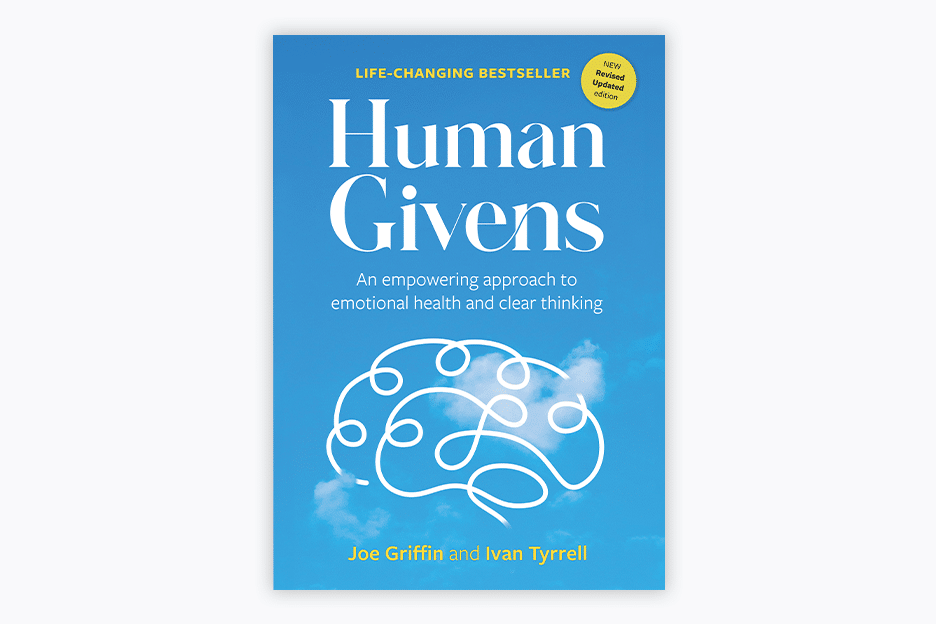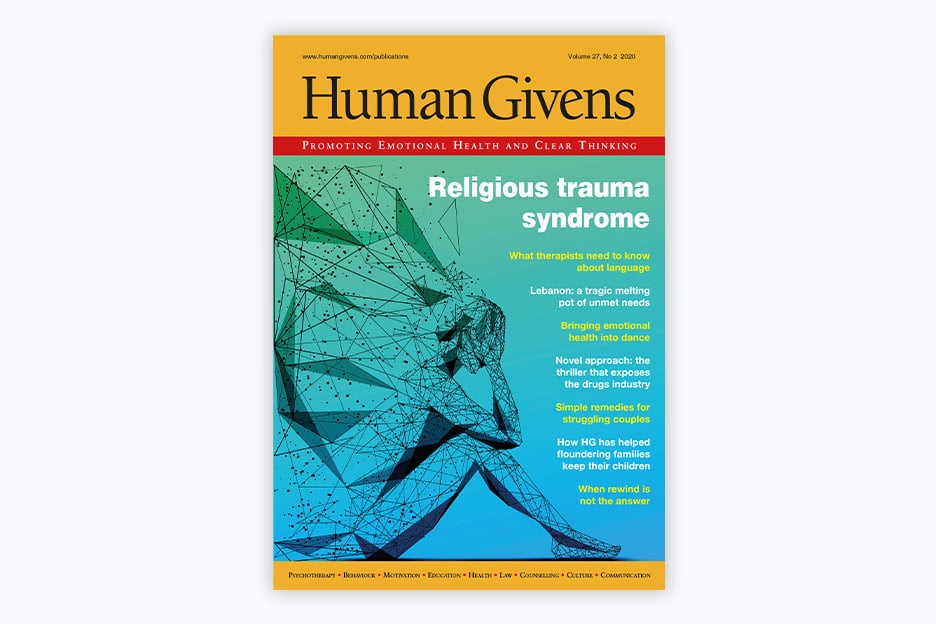How the human givens approach embodies person-centred care
You may be familiar with the term person-centred care. But even if you’re not, you might well have been a recipient of it. It is a term for an initiative that has been rippling through the NHS for some years now, with the aim of changing care, in whatever setting it is delivered, from something that is done or given ‘to’ people to something that is achieved with them.
In other words, it is about partnership. As NHS Health Education England has put it, “Being person-centred is about focusing care on the needs of the individual – ensuring that people’s preferences, needs and values guide clinical decisions, and providing care that is respectful of and responsive to them.”1
This approach is as applicable to mental health needs as it is to physical needs.2 So, as mental health is the domain of HG practitioners and those trained in HG who use it in their NHS work – as psychiatrists, GP, nurses, occupational therapists and more – it is instructive to compare how our standard practice accords with the goals of person-centred care.
It ensures that people are always treated with dignity, compassion and respect.
In its report “Person-centred care made simple: what everyone should know about person-centred care”, The Health Foundation clearly sets the scene: “Person-centred care supports people to develop the knowledge, skills and confidence they need to more effectively manage and make informed decisions about their own health and health care. It is coordinated and tailored to the needs of the individual. And, crucially, it ensures that people are always treated with dignity, compassion and respect.” One of its key principles is supporting people to recognise and develop their own strengths and abilities to enable them to live an independent and fulfilling life.3
The HG therapy session model known as RIGAAR (an acronym for the crucial steps of rapport building; information gathering and giving; goal setting; accessing resources; agreeing strategies; and rehearsing success) completely embodies the tenets of person-centred care.
Clearly, it is impossible to create a respectful and constructive relationship with someone without building and maintaining rapport. So this is what HG practitioners pay attention to first. Information gathering focuses on finding out from a client what is relevant in helping them approach their difficulties differently. Something that happened in the past is relevant only if it is impacting a person’s here and now. Equally, a person’s beliefs or conditioning may be exacerbating the problem – as when someone with depression is convinced that they have a genetic illness that only medication can shift or that it is impossible to be successful if you don’t go to university.
An HG practitioner is not looking to see what is wrong with a person but at what isn’t working in a person’s life – ie identifying essential needs not sufficiently well met or innate resources not well used and helping a client address this. For instance, a key factor may be that the person seeking help always dreamed of following a different career but was persuaded otherwise by their parents. Through careful and genuinely curious questioning, individuals’ true “preferences, needs and values”1 can be uncovered and taken account of.
An HG practitioner is not looking to see what is wrong with a person but at what isn’t working in a person’s life.
Information giving (such as explaining why anxiety, depression or psychosis, etc, may occur and how to shift it) is a powerful means of enhancing a person’s sense of agency – when we know why things happen and the effects of what we do, we are more ready to practise ways to change unhelpful thoughts, attitudes and behaviours. Furthermore, to help clients meet their need for a sense of autonomy and control, HG practitioners aspire from the outset for clients to take ownership of whatever they achieve in therapy, or any other therapeutic interaction, such as a GP consultation.
Goal setting is crucial for creating a focus for the work, and HG practice emphasises that the goal must be one that is meaningful for the client, not the therapist. It may well be that someone’s health would benefit if they lost weight but, if their aim is to create a more meaningful life for themselves, that is what is focused on – and, indeed, it commonly happens that, when essential needs, such as for meaning and purpose, are better met, unhealthy behaviours start to fall away.
Accessing resources is something that the HG practitioner will do throughout the session or therapeutic encounter, looking out for any qualities and attributes that the client can draw on or develop in solving their difficulties. Everyone has valuable qualities, even if they don’t recognise them, and it is only by treating people with genuine “dignity, compassion and respect”3 that they can be encouraged to appreciate and build on what they have.
HG practitioners do not impose strategies for change; they agree them, recognising that, unless individuals buy into tasks to be undertaken and techniques to practise, this will not be an equal partnership. Practitioners are genuinely curious to know how their clients get on between sessions, drawing positives from what clients may see as failures – if, for instance, tiredness or lack of privacy prevented a person from completing an agreed task, that is useful information and it is necessary to rethink the carrying out of the task to take account of such obstacles.
The final element of the RIGAAR model is the powerful rehearsal stage. Here, usually through deep relaxation and guided imagery, a client experiences in their imagination putting into practice the strategies discussed for achieving their goals, aided by the use of appropriate metaphors and stories to help open up their vision of what is possible and embed the new desired patterns of behaviour. What the brain focuses on is what it tends to get, so rehearsing the new behaviours, including ways to get back to a state of calm if necessary, hugely helps in building clients’ confidence. The guided imagery is tailored to the needs and circumstances of each individual client, not read from a script. Circumstances alter cases and one size does not fit all.
Clearly, then, the HG approach fully embodies The Health Foundation’s requirement for person-centred care to support people “to develop the knowledge, skills and confidence they need to more effectively manage and make informed decisions about their own health and health care. It is coordinated and tailored to the needs of the individual.”3
The Health Foundation points out in its report that the first person to use the term ‘person-centred’ was psychologist Carl Rogers, in the early 1960s. While different in many ways from the meaning attributed today to ‘person-centred care’, what both approaches share, it says, is an emphasis on empathy, suspension of judgement and appreciation of a client’s own perspective. This again accords with the HG practice of careful listening and working with whatever a client brings into therapy.
Carl Rogers strongly believed that clients already had their own answers to their difficulties, albeit buried inside them, and that it was the role of the therapist to create a sufficiently empathic environment for the client to be able to discover them. Certainly an HG practitioner will know that clients have more resources within them than they realise, and will facilitate their making the most of them.
However, we would maintain that not every solution is sitting within, just waiting to be untapped. Clients may need to learn different ways of thinking and reacting, consider different priorities and take different perspectives and, for that, they may need to borrow their therapist’s brain, initially, to guide them. Or they may need to learn how to release or develop their innate resources (HG practitioners will routinely teach missing coping skills). In this way, HG is in line with the modern person-centred approach, which emphasises the teaching of skills and self-management and respecting the wishes of the individual – who, in our experience, never wants to be left going round and round in circles but to be gently directed towards a road that leads somewhere better.




